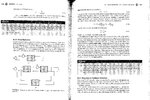fareen
Full Member level 3
hello pppl,
i have an other task on which im blank
i have to design a circuit to to improve signal to noise ratio by using following stages
pre amplifer without noise
amplifer with noize signal
feedback
the gain of the amplifer should be 50db
and required snr=35db
can suimbody help??
thanks in advance**broken link removed**
i need to replace the block with circuit components

i have an other task on which im blank
i have to design a circuit to to improve signal to noise ratio by using following stages
pre amplifer without noise
amplifer with noize signal
feedback
the gain of the amplifer should be 50db
and required snr=35db
can suimbody help??
thanks in advance**broken link removed**
i need to replace the block with circuit components


Last edited:

